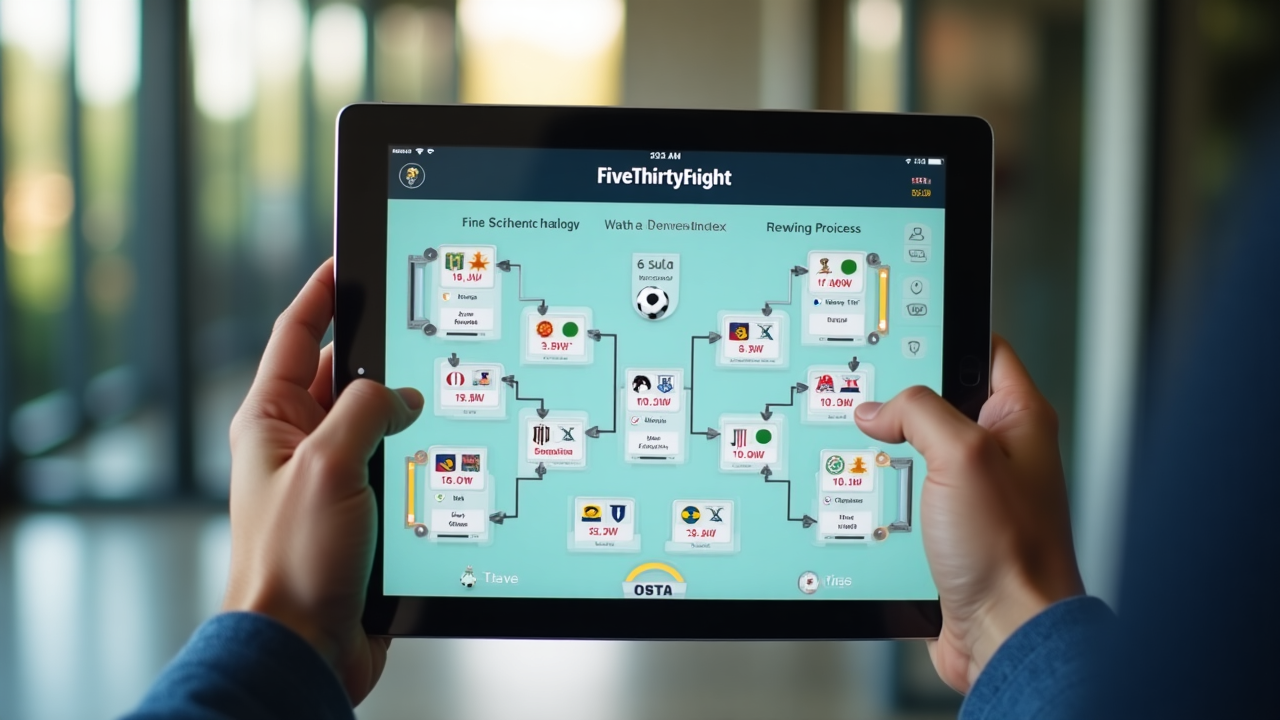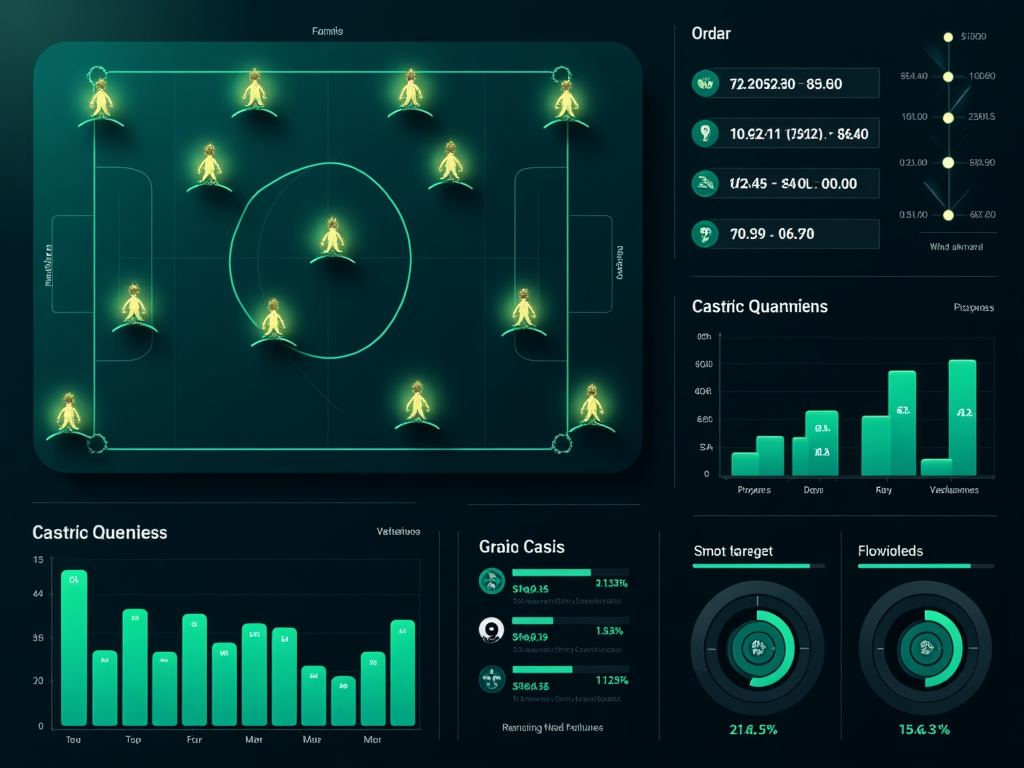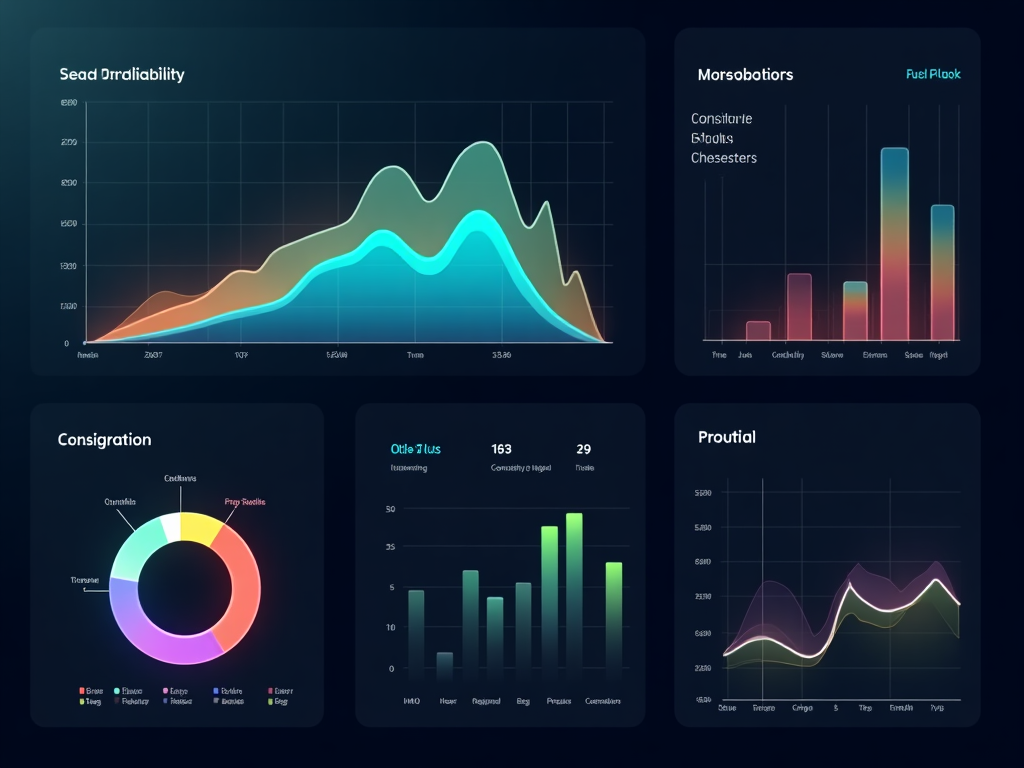Welcome to the fascinating world of sports analytics where mathematics meets athletic competition. Redleafzone explores how advanced algorithms, statistical models, and machine learning techniques transform raw data into actionable insights. Our platform examines the methodologies behind leading prediction services, revealing the intricate calculations that forecast match outcomes, tournament winners, and team performance trajectories. From Elo rating systems to expected goals metrics, discover how data scientists leverage historical patterns, current form indicators, and probabilistic frameworks to illuminate the future of sports results. Whether you're interested in understanding Soccer Power Index calculations, exploring Monte Carlo simulations for championship predictions, or learning how home advantage factors into algorithmic forecasts, this comprehensive resource demystifies the mathematical foundations of modern sports forecasting.

Explore the most influential sports forecasting services that combine statistical rigor with innovative modeling approaches
Renowned for their Soccer Power Index and comprehensive tournament simulations, FiveThirtyEight applies sophisticated statistical modeling to generate probability-based forecasts across multiple sports disciplines. Their methodology incorporates team strength ratings, historical performance data, and contextual factors to produce dynamic predictions that update in real-time as new information becomes available.
Specializing in football club rankings, ClubElo implements the time-tested Elo rating system with sport-specific modifications to track team strength evolution over time. This platform maintains historical databases spanning decades, enabling researchers and enthusiasts to analyze long-term performance trends, compare eras, and understand how club competitiveness fluctuates across seasons and competitions.
This comprehensive data repository provides extensive historical match results, betting odds archives, and statistical datasets that fuel academic research and independent modeling efforts. The platform serves as a valuable resource for those developing custom prediction algorithms, offering clean, structured data spanning numerous leagues and seasons with consistent formatting and thorough documentation.
Leveraging advanced simulation technology, Accuscore runs thousands of virtual match scenarios to generate probabilistic outcomes for upcoming fixtures. Their approach combines player-level performance metrics with team dynamics and situational variables, producing detailed score predictions alongside win probability estimates that account for variance and uncertainty inherent in competitive sports.
Offering user-friendly prediction interfaces alongside algorithmic forecasts, PredictZ combines automated statistical analysis with community insights to present comprehensive match previews. The platform emphasizes accessibility, translating complex mathematical models into digestible predictions that casual fans can understand while maintaining the analytical depth that serious sports bettors and researchers require.
Specializing in mathematical football predictions, Forebet employs complex algorithms that analyze team statistics, recent form, head-to-head records, and various performance indicators to generate probability distributions for match outcomes. Their platform presents predictions with accompanying confidence intervals, helping users understand the certainty levels associated with different forecasted results.
FiveThirtyEight has established itself as a premier destination for data-driven sports analysis, applying rigorous statistical methodologies originally developed for political forecasting to the athletic arena. Their flagship Soccer Power Index represents a sophisticated attempt to quantify team quality through offensive and defensive rating components.
The SPI system evaluates teams based on their expected goal-scoring and goal-prevention capabilities, adjusting for opponent strength and match location. Each team receives numerical ratings that reflect their attacking prowess and defensive solidity, which are then used to simulate match outcomes and generate win probabilities. The model continuously updates these ratings based on actual match results, creating a dynamic assessment that responds to current form while respecting historical performance patterns.
For major competitions like the World Cup, Champions League, and domestic league seasons, FiveThirtyEight runs extensive Monte Carlo simulations that play out the remaining fixtures thousands of times. Each simulation incorporates the SPI ratings, schedule information, and tournament structure rules to determine potential outcomes. By aggregating these simulation results, the platform generates probability estimates for various scenarios including championship winners, qualification outcomes, and relegation battles.
Unlike static ranking systems, SPI ratings evolve throughout the season as teams play matches and accumulate results. The adjustment algorithm considers not just wins and losses, but the quality of performance measured through expected goals and actual goal differentials. Surprising results against strong opponents trigger larger rating changes than expected outcomes against weaker competition, ensuring the system appropriately weights the informational value of each match.


R' = R + K × (S - E)
Where R' is new rating, K is adjustment factor, S is actual score, and E is expected scoreThe Elo rating system, originally designed for chess, has been successfully adapted to football club rankings by ClubElo. This elegant mathematical framework provides a single numerical value representing each team's current strength, with higher numbers indicating superior quality.
After each match, rating points transfer from the loser to the winner based on the pre-match expectation. If a strong team defeats a weak opponent, minimal points change hands because the outcome was anticipated. However, when an underdog prevails, substantial rating adjustments occur as the result contradicts prior expectations. This zero-sum characteristic ensures the total rating pool remains constant while individual team ratings fluctuate based on performance.
ClubElo maintains one of the most comprehensive historical rating databases in football, tracking club strength evolution across multiple decades. This longitudinal perspective enables fascinating analyses comparing teams from different eras, identifying periods of dominance, and understanding how competitive balance has shifted over time. Researchers can examine how legendary squads from past generations would theoretically match up against contemporary powerhouses using the common currency of Elo ratings.
The ClubElo system incorporates home field advantage into its expectation calculations, recognizing that teams typically perform better when playing in familiar surroundings before supportive crowds. The magnitude of this advantage varies across leagues and has evolved over time, with the model adjusting for these contextual factors. This nuanced approach improves prediction accuracy by accounting for the systematic performance differences between home and away fixtures.
Understanding the mathematical and computational foundations of sports forecasting
Modern prediction systems increasingly rely on machine learning algorithms that automatically discover patterns within vast datasets. These models ingest numerous features including team statistics, player attributes, weather conditions, and historical matchups, then identify complex relationships that human analysts might miss. Techniques like random forests, gradient boosting, and neural networks excel at capturing non-linear interactions between variables, producing predictions that adapt as they process more training examples.
Traditional statistical approaches like Poisson regression and logistic regression remain foundational in sports prediction. Poisson models are particularly well-suited for forecasting goal counts in football, as they naturally handle the discrete, low-scoring nature of the sport. These methods estimate parameters that describe the relationship between predictor variables and outcomes, providing interpretable coefficients that quantify how different factors influence match results. The transparency of these approaches makes them valuable for understanding which variables drive predictions.

Gathering comprehensive match statistics, player metrics, and contextual information
Creating meaningful variables that capture team form, strength, and situational factors
Fitting algorithms to historical data to learn predictive patterns
Applying trained models to upcoming fixtures to forecast outcomes
The critical variables that influence forecasting accuracy
Recent performance trends provide crucial signals about team momentum and confidence levels. Models typically weight recent matches more heavily than distant historical results, recognizing that team quality fluctuates throughout seasons. Form indicators might include points earned in the last five matches, goal differentials over recent weeks, or performance metrics like expected goals that reveal underlying quality beyond raw results. The challenge lies in distinguishing genuine form changes from statistical noise caused by random variation.
The home field advantage represents one of the most consistent phenomena in sports, with teams systematically performing better when playing at their own venue. Multiple mechanisms contribute to this effect including crowd support, familiarity with playing conditions, reduced travel fatigue, and potential referee bias. Prediction models must calibrate the magnitude of home advantage appropriately, as it varies across leagues, diminishes for elite teams, and has evolved over time. Recent research suggests home advantage may be weakening in some competitions.
Player availability significantly impacts team strength, particularly when key performers are absent. Elite players contribute disproportionately to their team's success, meaning their absence creates larger performance deficits than average players. Sophisticated models attempt to quantify individual player value, adjusting team strength ratings when important figures miss matches due to injury, suspension, or rotation. However, accurately assessing these impacts remains challenging as team chemistry and tactical adjustments can partially compensate for missing personnel.
Historical matchup results between specific opponents can reveal tactical advantages or psychological factors that transcend general team quality. Some teams consistently perform well against particular opponents due to stylistic matchups, even when their overall strength suggests otherwise. However, models must balance the relevance of head-to-head history against sample size limitations and the fact that team rosters and management change over time. Recent direct encounters typically carry more weight than matches from distant past seasons.

Expected Goals has revolutionized football analytics by providing a more nuanced measure of team performance than traditional goal tallies. This metric quantifies the quality of scoring chances created and conceded, offering insights into underlying team strength that actual results may obscure due to finishing variance and goalkeeper performance.
Each shot attempt receives an xG value between 0 and 1 representing the probability that an average player would score from that position under those circumstances. The calculation considers factors like shot distance, angle, defensive pressure, assist type, and whether the chance came from open play or a set piece. Advanced models incorporate additional variables such as defensive positioning and goalkeeper location. By summing these individual shot probabilities, analysts derive team-level xG totals that indicate how many goals a team "should have" scored based on chance quality.
Research demonstrates that expected goals metrics predict future results more accurately than actual goal counts. Teams consistently outperforming their xG are likely experiencing good fortune that will regress toward the mean, while those underperforming their xG may be due for improved results. Prediction models incorporating xG data can identify teams whose league position doesn't reflect their true quality, enabling more accurate forecasts. The metric effectively filters out the noise of shooting variance and goalkeeper heroics to reveal sustainable performance levels.
Modern rating systems like FiveThirtyEight's SPI explicitly incorporate expected goals into their team strength calculations. Rather than simply tracking wins and losses, these systems evaluate the quality of chances created and allowed, building a more stable and predictive measure of team ability. This approach recognizes that football results contain substantial randomness, and that teams creating superior chances will eventually see their fortunes reflected in the standings even if short-term results suggest otherwise.


Evaluating forecasting model performance requires sophisticated metrics that go beyond simple correct/incorrect classifications. The inherent randomness in sports means even excellent models will make many apparently incorrect predictions, as unlikely outcomes regularly occur in competitive athletics.
The most rigorous accuracy assessment examines whether predicted probabilities align with observed outcome frequencies. If a model assigns 70% win probability to home teams in a certain situation, those teams should indeed win approximately 70% of such matches over a large sample. Calibration plots visualize this relationship, revealing whether models are overconfident, underconfident, or well-calibrated. Perfectly calibrated models may still seem inaccurate on individual predictions, but their probability estimates prove reliable in aggregate.
The Brier score quantifies the accuracy of probabilistic predictions by measuring the mean squared difference between predicted probabilities and actual outcomes. Lower scores indicate better performance, with a perfectly calibrated and sharp model achieving the minimum possible score. This metric rewards both accuracy and confidence, penalizing models that hedge with probabilities near 50% even when outcomes are more predictable. Comparing Brier scores across models provides an objective performance benchmark.
For predictions involving multiple possible outcomes like home win, draw, or away win, the ranked probability score assesses how well the predicted probability distribution matches reality. This metric accounts for the ordinal nature of outcomes, recognizing that predicting a draw when the away team wins is less wrong than predicting a home win. RPS provides a more nuanced evaluation than simple accuracy percentages for multi-outcome predictions.
A practical accuracy test involves comparing model predictions against betting market odds to identify situations where the model and market disagree. If model predictions consistently identify value opportunities that prove profitable over time, this demonstrates genuine forecasting skill. However, this test sets a high bar since betting markets aggregate information from many sources and typically prove difficult to beat consistently after accounting for transaction costs.
How predictive models forecast championship outcomes through computational simulations
Tournament simulations represent a powerful technique for generating championship probabilities by repeatedly playing out the remaining season schedule using probabilistic models. Rather than attempting to predict the specific sequence of results that will occur, simulations embrace uncertainty by running thousands of possible scenarios and aggregating the results to produce probability distributions for final standings.
The simulation begins with current team strength ratings derived from the chosen rating system, whether Elo, SPI, or another methodology. These ratings quantify each team's quality and form the foundation for match outcome probabilities. The simulation also incorporates the remaining fixture schedule, accounting for which teams still face each other and whether matches occur at home or away venues.
For each remaining fixture, the simulation calculates win/draw/loss probabilities based on the competing teams' ratings and home field advantage. A random number generator then determines the specific outcome for that match in this simulation iteration. This process repeats for every remaining fixture, producing one possible completion of the season. The stochastic nature ensures different simulation runs generate varied scenarios reflecting the inherent uncertainty in sports.
The simulation runs this process thousands or tens of thousands of times, each iteration representing one possible way the season could unfold. Some simulations will feature surprising upsets and unexpected results, while others follow chalk with favorites winning most matches. By running many iterations, the simulation captures the full range of plausible outcomes weighted by their probability, from likely scenarios to improbable but possible sequences of results.
After all simulation iterations complete, the system tallies how often each team finished in various positions. If a team won the championship in 3,000 of 10,000 simulations, their championship probability is estimated at 30%. This aggregation produces probability distributions for all relevant outcomes including league titles, qualification for continental competitions, and relegation. The probabilities automatically account for remaining schedule difficulty and complex tiebreaking scenarios.

Effective visualization transforms complex probabilistic forecasts into intuitive graphics that communicate uncertainty and likelihood to diverse audiences. The challenge lies in presenting nuanced statistical information without oversimplifying or misleading viewers about the inherent uncertainty in sports predictions.
Bar charts displaying win/draw/loss probabilities for upcoming matches provide immediate visual comparison of outcome likelihoods. Color coding helps distinguish between outcomes, while the relative bar heights instantly communicate which result the model considers most probable. These simple visualizations work well for casual audiences while conveying the essential probabilistic information that differentiates forecasts from deterministic predictions.
For knockout tournaments, probability flow diagrams illustrate how teams might progress through successive rounds. The width of flow paths represents probability, showing likely and unlikely routes to the final. These visualizations elegantly capture the branching nature of tournament structures while maintaining focus on the most probable scenarios. Viewers can trace potential matchups and understand how early upsets would reshape the tournament landscape.
Tracking how championship probabilities change throughout a season reveals momentum shifts and critical moments. Line charts showing each team's title odds over time highlight when specific results dramatically altered the competitive landscape. These visualizations help audiences understand how the race evolved and identify turning points where certain teams' chances surged or collapsed based on their results and rivals' performances.
Heatmaps displaying predicted results for all remaining fixtures provide comprehensive season outlooks in compact form. Color intensity represents predicted goal differentials or win probabilities, enabling quick identification of favorable and challenging stretches in each team's schedule. These dense visualizations serve analysts and dedicated fans seeking detailed forecasts across entire leagues rather than individual match focus.

Modern platforms enable users to explore predictions interactively, adjusting assumptions and seeing how probabilities respond. These tools democratize sophisticated forecasting by making complex models accessible through intuitive interfaces.
We value input from our community of sports analytics enthusiasts. Whether you have insights about prediction methodologies, suggestions for additional content, or questions about the mathematical foundations of forecasting, we welcome your thoughts. Your feedback helps us refine our educational resources and address topics that matter most to our audience.
3030 32 Ave NE
Calgary, AB T1Y 7A9
Canada
+1 403 735 6336
Mathematical modeling, Statistical analysis, Machine learning applications, Data visualization

Modern sports forecasting represents the intersection of traditional statistical methods and cutting-edge machine learning techniques. Data scientists working in this field must balance model complexity with interpretability, ensuring predictions remain explainable while capturing subtle patterns in vast datasets. The workflow typically involves extensive data cleaning, feature engineering to create meaningful variables from raw statistics, model selection and validation, and continuous refinement as new data becomes available. Successful prediction systems require not just technical expertise but domain knowledge about sports dynamics, enabling practitioners to incorporate contextual factors that pure data-driven approaches might miss.

The algorithmic landscape for sports prediction encompasses diverse methodologies, each with distinct strengths and limitations. Simple models like linear regression offer transparency and computational efficiency but may miss complex non-linear relationships. Ensemble methods like random forests combine multiple decision trees to capture interactions between variables while reducing overfitting risk. Neural networks can learn intricate patterns but require large training datasets and substantial computational resources. Bayesian approaches explicitly model uncertainty and incorporate prior knowledge, making them well-suited for situations with limited data. The optimal choice depends on available data volume, computational constraints, and whether model interpretability matters for the specific application.